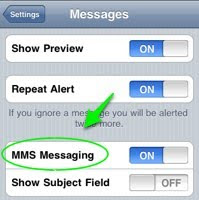TABLET WAR BEGINS.....
I’m going to try writing longer form stuff for the weekends, sort of to stretch the old mental legs a bit and share a bit of the stuff that is floating through my transom, man, about tech and especially mobile and portable electronics.
Come back with me to 2001. A young man got up on stage one afternoon in November to announce something new and amazing: an operating system dedicated to tablet computing. That young man was Microsoft’s Bill Gates and that operating system was WINDOWS XP TABLET PC EDITION.
Chances are that is the first and last time you saw a working tablet computer. Laptops, then, were monsters. They were heavy – 10 pounds or more – had small, bad batteries, and WiFi was just a dream for most people. It seemed, in those dark years, that laptop manufacturers could shave off pounds and complexity by removing the keyboard and offer a pen-based OS. After all, this was a post-PalmOS era when handwriting recognition was an input option we all knew and understood.
The thinking was this: if you can streamline applications – data entry applications being the target here – you could sell smaller, more expensive computers to medical and business clients. It didn’t work and Windows Tablet PC has been little more than a clever solution to a nonexistent problem.
So what’s with all the tablet talk lately?
We have entered an era of the thin and light computer and, rather than worrying about power we’ve become obsessed with the concept of thinness. This is why Apple, in their wisdom, created the MacBook Air and the iPod Touch. This is the same reason we are all salivating over the thought of tablets thinner than an issue of BusinessWeek and this is why laptop manufacturers –and Michael Arrington – are rushing to make them have a capacitive touch screen and manufacturing difficulties are slowing down the tablet’s release to a crawl, thereby preventing us all from having one. It will be thin and, like the abhorrent HP DreamScreen, will focus on media. The extant tablet verticals – mostly in the medical industry – will still exist.
Note this new focus. Rather than trying to create a business machine, manufacturers understand people want bigger screens on which to consume web and media content.
So what can we expect in the next year? Well, first we have the CrunchPad. When all the bugs are worked out, it will be an amazing device – I’ve seen it. And I’m not just saying that because I’ve been intimately involved in the design process, because I wasn’t – that gives me a bit of perspective. Expect the CrunchPad to be a excellent device for blogging – that’s what Mike made it for – and for web apps. Don’t Expect much in the way of media. [I was wrong.]
Then there’s the iPad. This will eclipse the industry and for the rest of the year that’s all you’ll hear about. Trust me. Apple could require you to give this device three drops of blood every morning in order to satisfy the demonic hell-beast soul trapped inside it and we would, gladly. The release will be on par with the iPhone release and they’ll sell a million of them.
Then you have Microsoft’s COURIER. It’s impressive, but it’s Microsoft; don’t expect that thing to take shape for two years and don’t expect it to take off until the second generation. Like the Zune, Microsoft will make a product but they won’t make it good until they have a little time to mull it over. I don’t think the Courier will be a player in 2010. As for the rest of the devices, expect slow uptake by price conscious consumers and folks who don’t think it’s “cool” to own “name brand” technology and are real “hackers”(read: teenagers and European students)
Archos,for example, is doing a lot of good work in the tablet space but they’re an also-ran. They are going the Tablet OS route, which is no good. Creative has some devices planned and it’s also clear that ChromeOS could power a nice device – provided HTC makes it.
As for connectivity most of these will have a 3G option – although I doubt the iPad will have 3G built-in. WiFi is an obvious second-best.
As for size, tablets, at least with capacitive screens, are weighed down by a huge hunk of metal that shields the electronics from the screen. This hunk of metal – and the glass – prevents us from getting a bigger iPod Touch and is what is keeping the iPad from coming out sooner. Once the world’s (i.e. China’s) scientists solve this problem we’ll get what we want. Until then it’s resistive all the way.
So prepare yourselves for the coming tablet wars and sock away a little cash because things are going to get interesting in 2010.






































